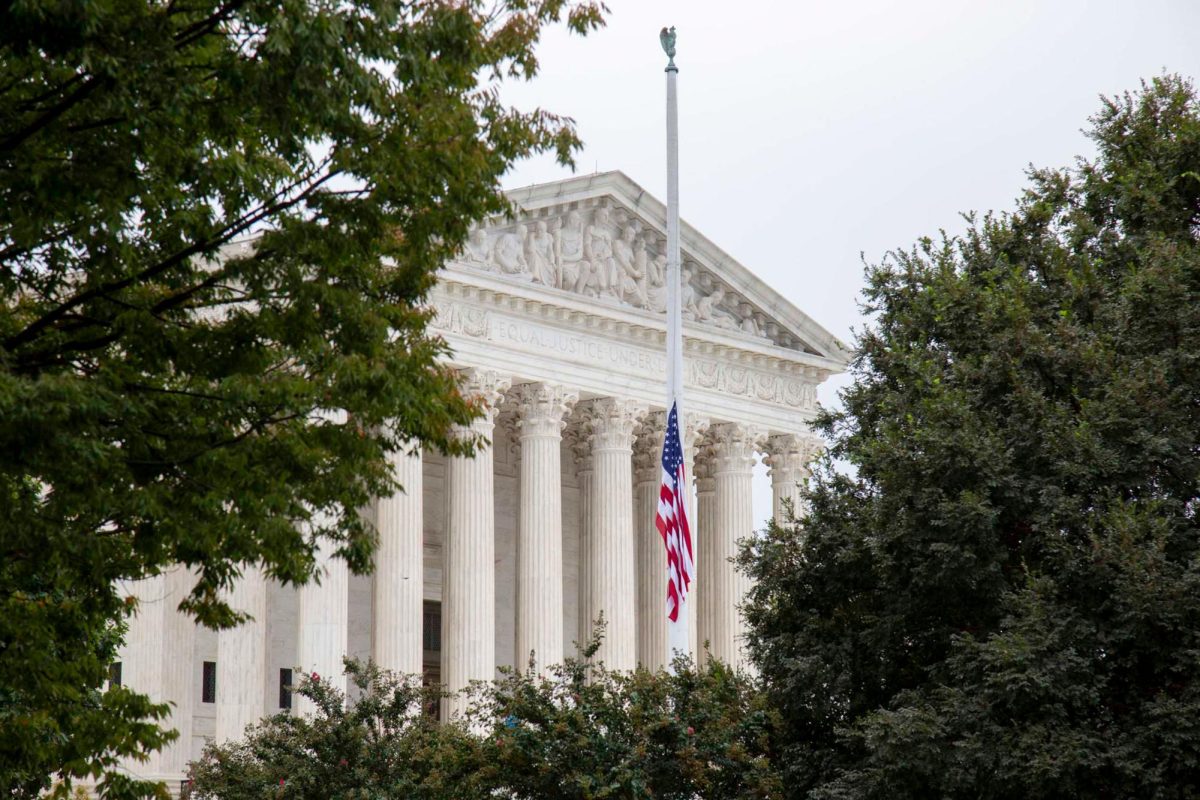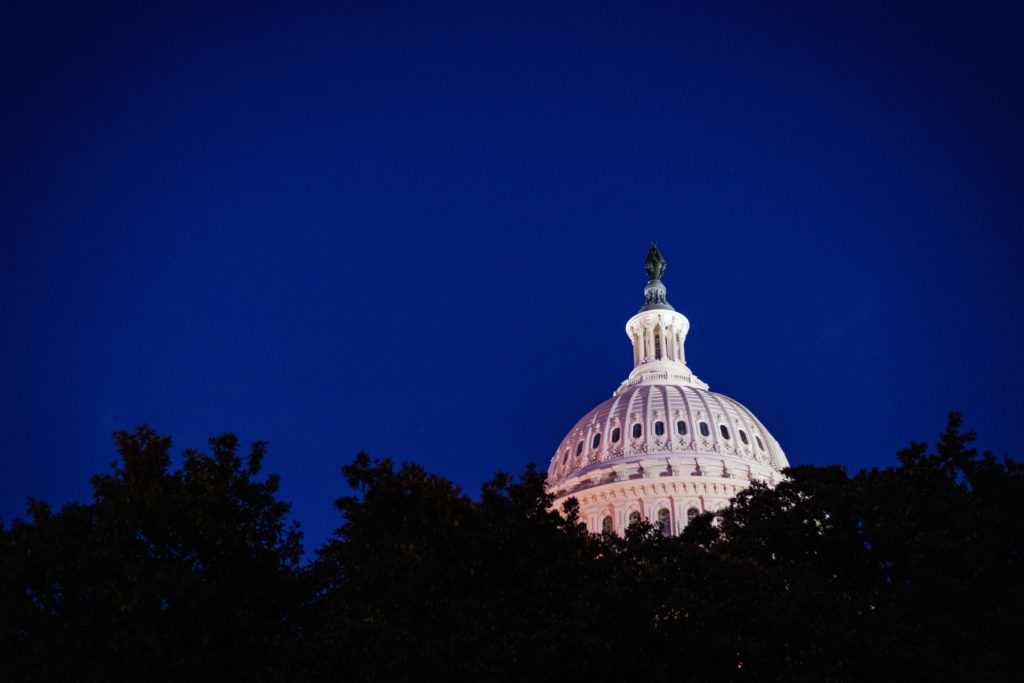Football season is ramping up, but there won’t be many coaches of color on the NFL sidelines. One GW professor’s study points out a major reason for the lack of diverse coaches: racial bias in lower-level promotions.
School of Business professor James Wade and three other authors found coaches of color were about half as likely as white coaches to be promoted to the coordinator level — a pool teams in the league typically draw from when making head coaching decisions — because of racial bias rooted in promotions from their initial positions, like positional or assistant coaches. The study concluded that coaches of color are more likely to be sorted into positions with less opportunity for advancement and thus four times less likely to attain head coaching positions than white candidates.
NFL teams typically have two top coordinators — one for the offense and one for defense — who act as the main assistants to the head coach. Teams hiring a new head coach typically choose from the pool of coordinators when making that decision.
“If you’re a minority, you’re less likely to get promoted,” Wade said. “You’re wasting talent because the larger pool that you can recruit from for talent, the more likely you are to get someone really good.”
Wade said the NFL could theoretically close the racial disparity gap among staff if they equally place people of color and white coaches in positions with higher promotability, like quarterbacks coach, as roles with lower promotability, like running backs coach.
“That would be a structural change, and it would be not that hard to do if you determined that’s the problem,” Wade said. “But we control for all that. And we find that they still have a huge disadvantage in promotion prospects.”
Wade co-authored the study with Christopher I. Rider from the University of Michigan, Anand Swaminathan from Emory University and Andreas Schwab from Iowa State University.
The researchers performed a regression analysis — a statistical method that shows the relationship between two variables — to determine racial disparity using information from the NFL fact book about coaches’ promotions in every year from 1985 to 2015, which the league publishes annually. He said the researchers controlled for variables like whether the coach was white or a person of color, and researchers found people of color were promoted at a lower rate.
The study included simulations that demonstrated how the league could close the gap in promotions, including where researchers assessed the likelihood of being promoted to head coach from other NFL positions. He said he and the other researchers determined there was a racial bias because if there were two equally qualified people in the same type of position at the same time, the simulation found that it was less likely the teams promoted the candidate of color.
Wade said the study focused on the NFL because the authors of the study could control for many factors, like initial and current coaching positions and team, which no other studies have been able to account for.
He said bias interventions like the Rooney Rule — the NFL policy that requires teams to interview at least one person of color for head coaching and coordinator positions — would be more effective if required for lower-level positions like positional coaches and other assistant coaches. On average, NFL head coaches make $6.6 million per year, while the average yearly salary for an NFL coordinator and NFL assistant coach is about $1 million and $400,000, respectively.
The NFL mandated the rule for head coaches in 2003 and applied the policy to coordinators in 2021. Wade said the University of Texas System officials implemented the Rooney Rule to hire for all senior administrative positions and that since organizations are requiring the policy at lower levels, they may see its effectiveness in reducing racial disparities in the future.
Experts in racial disparities said studies can help detect bias but that closing the racial disparity gap in leadership positions requires commitment from the NFL.
Glenn Bracey, an assistant professor of sociology at Villanova University, said there needs to be positive and negative sanctions for diversifying coaching staff to “encourage” teams in the league to close the racial gap. He said researchers should develop more studies like Wade’s to explain racial disparities within the NFL, but the organization already knows racial disparities are an issue and has demonstrated “unwillingness” to solve it.
He said since the league is lucrative and popular, NFL leadership is not facing pressure to make changes. Bracey said groups like the NFL Players Association — the union representing NFL players — or fans could push the league to change, but “media embarrassment campaigns” like lawsuits would have a greater impact.
“The bias appears to run deep in the NFL, it is an old bias. It is a racism that seems to be just thinly veiled, especially at the ownership level,” Bracey said. “And so long as there’s no discipline for the owners around failing to advance minority coaches, one can expect that the current situation will continue.”
Jeremi Duru, a professor of law at American University, said the ratio of Black quarterbacks to total Black players is disproportionately low because after the league was desegregated in 1946, Black players coming into the league were not put in the positions that require “thinking,” like quarterback. He said this pattern has morphed into fewer Black quarterback coaches, offensive coordinators, coaches and team owners in the present day.
He said it would take a “programmatic” effort and commitment to close the NFL’s racial disparity gap.
“It takes intentionality,” Duru said. “It takes a recognition on the part of the league, that diversity and inclusion are good because they’re good.”
Guadalupe Marquez-Velarde, an associate professor of sociology at Utah State University, said she has found the effects of the Rooney Rule to be “tenuous” within her own research since the requirement only guarantees interviews, while bias can be present at any stage of that process.
She said our social structure does not allow for “practical” solutions in closing racial gaps in leadership positions in the NFL. She said the league could close the racial gap between coaches by training interested NFL players for coaching while also implementing the Rooney Rule in the hiring process.
“Research like this can pinpoint the problem, but the solutions require complex changes at the social and organizational levels,” Marques-Velarde said in an email.








